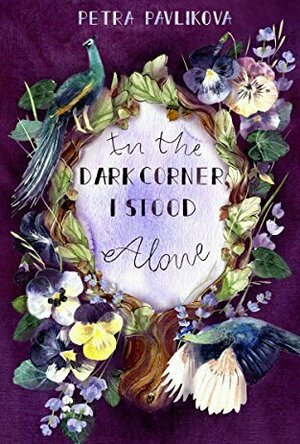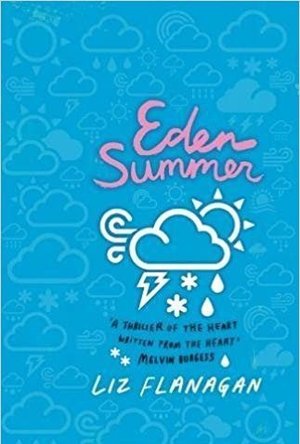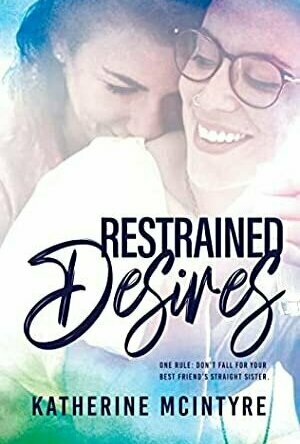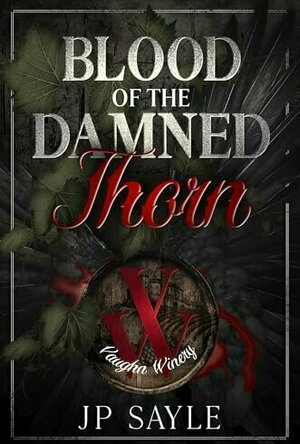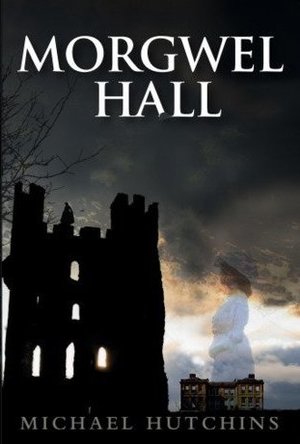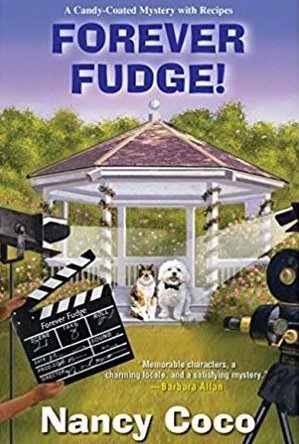Search
EmersonRose (320 KP) rated In The Dark Corner I Stood Alone in Books
Nov 20, 2019
I stood alone in a dark corner. My imagination ran wild.”
In the Dark Corner, I stood Alone is a collection of short stories by author Petra Pavlikova, published on June 12th, 2018. These short stories pull together themes of women and fairytales. Telling stories about strong women in stressful situations, difficult because they are real, and how these women pull through, with a healthy dose of the fantastical. The collection itself is a short and easy read as the stories range in length from 5-20 pages each. I loved the beautiful imagery created in these stories as they each take you on fantastic journeys.
The characters in these stories are such strong and relatable women that I fell in love with each one as I read their story. From beginning to end this book captured this beautiful whimsey that kept me captivated in each story. As you read, each has a distinctive story to tell, but they are all in the same unique voice that has a charming but straightforward tone that captures the fairytale quality splendidly. I think that my favorite story may be The Smell of Sweet Lavender, as it tackles a heart-wrenching tale of trying to be true to yourself and the cost it sometimes has on those that you love most. But each was so unique that they held different messages and meanings to them, that I could see myself having a different favorite depending on what mood I was in at the time. This is definitely one of those books that I could see myself re-reading whenever I just wanted to curl up with a sweet set of stories that allow my imagination wander in the realm of fairies and distant kingdoms. The magic in them creates a tone but the themes within them last without extra flare, making them that much more poignant.
The other thing that makes this book really stand out is the remarkable work of the illustrator Anastasia Telegina. From the small flowers and bright colored pages to the exquisite images of the women in the book, the watercolor work is astounding and fits in perfectly with the wanderlust tone of the writing. Each time I saw that stories full image, I was blown away by the beauty and talent. They play with your imagination rather than entirely putting images in your head, keeping the fluidity of the imagination intact while still creating magnificent images. Creating perhaps what is more what a child might imagine from what is described that a realistic picture. This pair clearly makes an excellent team.
These are stories for almost any age in the themes it tackles and the beautiful way in which they are told. While some of the ideas may be intense for a younger audience, the way in which the stories are told make them accessible to any reader. They are important topics dealt with in a way that is natural and very real world, while held within a slightly more fantastical space. I very much enjoyed reading this book and would definitely recommend it. I will be keeping an eye out to read more from this author. Five Stars.
In the Dark Corner, I stood Alone is a collection of short stories by author Petra Pavlikova, published on June 12th, 2018. These short stories pull together themes of women and fairytales. Telling stories about strong women in stressful situations, difficult because they are real, and how these women pull through, with a healthy dose of the fantastical. The collection itself is a short and easy read as the stories range in length from 5-20 pages each. I loved the beautiful imagery created in these stories as they each take you on fantastic journeys.
The characters in these stories are such strong and relatable women that I fell in love with each one as I read their story. From beginning to end this book captured this beautiful whimsey that kept me captivated in each story. As you read, each has a distinctive story to tell, but they are all in the same unique voice that has a charming but straightforward tone that captures the fairytale quality splendidly. I think that my favorite story may be The Smell of Sweet Lavender, as it tackles a heart-wrenching tale of trying to be true to yourself and the cost it sometimes has on those that you love most. But each was so unique that they held different messages and meanings to them, that I could see myself having a different favorite depending on what mood I was in at the time. This is definitely one of those books that I could see myself re-reading whenever I just wanted to curl up with a sweet set of stories that allow my imagination wander in the realm of fairies and distant kingdoms. The magic in them creates a tone but the themes within them last without extra flare, making them that much more poignant.
The other thing that makes this book really stand out is the remarkable work of the illustrator Anastasia Telegina. From the small flowers and bright colored pages to the exquisite images of the women in the book, the watercolor work is astounding and fits in perfectly with the wanderlust tone of the writing. Each time I saw that stories full image, I was blown away by the beauty and talent. They play with your imagination rather than entirely putting images in your head, keeping the fluidity of the imagination intact while still creating magnificent images. Creating perhaps what is more what a child might imagine from what is described that a realistic picture. This pair clearly makes an excellent team.
These are stories for almost any age in the themes it tackles and the beautiful way in which they are told. While some of the ideas may be intense for a younger audience, the way in which the stories are told make them accessible to any reader. They are important topics dealt with in a way that is natural and very real world, while held within a slightly more fantastical space. I very much enjoyed reading this book and would definitely recommend it. I will be keeping an eye out to read more from this author. Five Stars.

Aladdin and The Magic Lamp - Interactive Kids Book
Book and Education
App
>> Watch how a little lamp & it's genie can turn a tailor’s son into a real prince >> Educational...
Eleanor Luhar (47 KP) rated Eden Summer in Books
Jun 24, 2019
I keep falling behind on wiring my reviews, sorry! I really need to get back on track. I finished this on Tuesday I think? I really enjoyed it, although it isn't quite worthy of five stars.
I'm going to put in a trigger warning as there are mentions of substance abuse, physical abuse, death, adoption and suicide.
Jess's best friend has gone missing. Through interviews with the police and Jess's personal recollections, we begin to build up a picture of Eden's life before her disappearance. Her sister had recently been killed in a car accident, and her seemingly perfect relationship with Liam was more complicated than anyone realised. Bit by bit, Jess - and we - begin to piece things together and discover where Eden has gone.
The girls are only young - 15 I think? - and very much have the all-consuming passion that young teens feel. As in, every little issue feels huge, and things feel far more serious than they might to an older person. I remember feeling this way. I think it was portrayed so accurately, the way fighting with your best friend feels like the end of the world and a family argument overwhelms you with guilt. It was a bit annoying in some ways, though; no fault of the author, of course, I just get a bit annoyed at kids taking things too seriously. I look back at myself and think how stupid it was to get so caught up in such little issues. So the things that Jess gets so worked up over just seemed a bit trivial to me, like she was exaggerating too much. But as I said, this creates the teenage voice really well in my opinion.
The things that both these girls have gone through are massive, though - Jess was attacked and Eden's sister killed. That's pretty hard for a young girl to deal with, and these are not the problems I'm saying are trivial. These are hugely important and emotional issues and I think it's great to talk about. I love books with these real, albeit sad, events. I think it is so good to discuss all the feelings and situations that follow, and also emphasise how it is not the end of the world if something bad happens. life will continue. Eden says how she feels her sister's death becoming more distant, more bearable, and how she doesn't want that to happen. She feels guilty, as if she's forgetting her and moving on. This is so important. She also thinks about killing herself due to guilt - which I won't ruin too much - but then realises how she shouldn't take life for granted. Her sister would've given anything to be alive still, and she shouldn't be throwing that away.
It was a really good read and I found myself wondering what was going to be revealed next. It was wel written and perfectly captured the young voice of Jess. If I read this when I was younger, I think I would've adored it. I would've understood it and connected to Jess more than I did now I'm older. 4 stars, definitely worth a read.
I'm going to put in a trigger warning as there are mentions of substance abuse, physical abuse, death, adoption and suicide.
Jess's best friend has gone missing. Through interviews with the police and Jess's personal recollections, we begin to build up a picture of Eden's life before her disappearance. Her sister had recently been killed in a car accident, and her seemingly perfect relationship with Liam was more complicated than anyone realised. Bit by bit, Jess - and we - begin to piece things together and discover where Eden has gone.
The girls are only young - 15 I think? - and very much have the all-consuming passion that young teens feel. As in, every little issue feels huge, and things feel far more serious than they might to an older person. I remember feeling this way. I think it was portrayed so accurately, the way fighting with your best friend feels like the end of the world and a family argument overwhelms you with guilt. It was a bit annoying in some ways, though; no fault of the author, of course, I just get a bit annoyed at kids taking things too seriously. I look back at myself and think how stupid it was to get so caught up in such little issues. So the things that Jess gets so worked up over just seemed a bit trivial to me, like she was exaggerating too much. But as I said, this creates the teenage voice really well in my opinion.
The things that both these girls have gone through are massive, though - Jess was attacked and Eden's sister killed. That's pretty hard for a young girl to deal with, and these are not the problems I'm saying are trivial. These are hugely important and emotional issues and I think it's great to talk about. I love books with these real, albeit sad, events. I think it is so good to discuss all the feelings and situations that follow, and also emphasise how it is not the end of the world if something bad happens. life will continue. Eden says how she feels her sister's death becoming more distant, more bearable, and how she doesn't want that to happen. She feels guilty, as if she's forgetting her and moving on. This is so important. She also thinks about killing herself due to guilt - which I won't ruin too much - but then realises how she shouldn't take life for granted. Her sister would've given anything to be alive still, and she shouldn't be throwing that away.
It was a really good read and I found myself wondering what was going to be revealed next. It was wel written and perfectly captured the young voice of Jess. If I read this when I was younger, I think I would've adored it. I would've understood it and connected to Jess more than I did now I'm older. 4 stars, definitely worth a read.
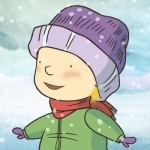
Into the Snow: A Stella and Sam Adventure
Games and Education
App
(Description en français plus bas.) Play alongside Stella and Sam and their dog Fred as they go...

Real Cake Maker 3D Bakery
Games and Entertainment
App
~~> Hungry? Get baking! Become the best cake baker in town and create the yummiest cakes! ~~> This...
Debbiereadsbook (1579 KP) rated Restrained Desires (Rehoboth Pact #3) in Books
Apr 9, 2022
Saved the best for last!
Independent reviewer for Archaeolibrarian, I was gifted my copy of this book.
This is the final book in the Rehoboth Pact trilogy. It CAN be read as a stand alone, however I STRONGLY recommend you read the other two books first. It will give you a better picture of Kyle and how, up to now, she has been kind of in the background. Confined got 4 stars, Opposed crept up to 4.5 stars.
But this one? Knocked it out the park, baby, and it gets the full and shiny 5 star rating! Saving the best for last was the right thing to do!
Chelsea is Aubrey's sister (from Opposed) and is newly divorced from her husband. Kyle is, well, at best, plodding along. Her mother (and I use the term very loosely!) pushes Kyle to say she is bringing a date to the family gathering and then panics because she doesn't have one. Chelsea, being all single, steps up to the plate to help Kyle. And there follows a journey of self discovery, and learning to love yourself, and that found families can be so much more than blood families.
Kyle. . .oh! i wanted to wrap her up and give her a big cuddle cos that parental female unit was not a nice person! Wanted to punch the b*tch a time or two! But Chelsea? She really SEES Kyle, and Kyle does struggle a bit with that, at first. Once she and Chelsea take their fake relationship up a notch, Kyle really benefits for having someone in her corner. And Chelsea? She's different to Aubs, but not less a force to be reckoned with. Once she gets her hands on Kyle, there was no going back.
Til someone does something stoopid and then there is a fight to be had.
Aubs nearly got a punch, here, along with that parental unit. She didn't take too well to Chelsea and Kyle getting together and deals with it badly. She DOES redeem herself, giving Chelsea the means to win the fight for Kyle, but still.
It is again, HEAVY on the emotional aspect, but for Kyle dealing with that parental unit b*tch and feelings of inadequacy, and Chelsea, dealing with her divorce, but her father's betrayal cuts deep. He does come out the other side, but faced with losing both his daughters will make anyone turnaround rapidly!
The smexy stuff? Oh! My! Days! steamiest of the three. Mostly because Kyle pushes every single button of Chelsea's and then some. And Chelsea pushes buttons in Kyle she never knew she needed pushing!
Obviously, Aubs and Selina play a part here, but also Mia and Sky, and it was lovely to catch up with them all.
I again commend Ms McIntyre on her writing skills. Switching from MF, to MM and then to FF can't be easy, but McIntyre NAILS it with the final book in this trilogy. Keep 'em coming, please!
As I said . .
5 full and shiny stars!
*same worded review will appear elsewhere
This is the final book in the Rehoboth Pact trilogy. It CAN be read as a stand alone, however I STRONGLY recommend you read the other two books first. It will give you a better picture of Kyle and how, up to now, she has been kind of in the background. Confined got 4 stars, Opposed crept up to 4.5 stars.
But this one? Knocked it out the park, baby, and it gets the full and shiny 5 star rating! Saving the best for last was the right thing to do!
Chelsea is Aubrey's sister (from Opposed) and is newly divorced from her husband. Kyle is, well, at best, plodding along. Her mother (and I use the term very loosely!) pushes Kyle to say she is bringing a date to the family gathering and then panics because she doesn't have one. Chelsea, being all single, steps up to the plate to help Kyle. And there follows a journey of self discovery, and learning to love yourself, and that found families can be so much more than blood families.
Kyle. . .oh! i wanted to wrap her up and give her a big cuddle cos that parental female unit was not a nice person! Wanted to punch the b*tch a time or two! But Chelsea? She really SEES Kyle, and Kyle does struggle a bit with that, at first. Once she and Chelsea take their fake relationship up a notch, Kyle really benefits for having someone in her corner. And Chelsea? She's different to Aubs, but not less a force to be reckoned with. Once she gets her hands on Kyle, there was no going back.
Til someone does something stoopid and then there is a fight to be had.
Aubs nearly got a punch, here, along with that parental unit. She didn't take too well to Chelsea and Kyle getting together and deals with it badly. She DOES redeem herself, giving Chelsea the means to win the fight for Kyle, but still.
It is again, HEAVY on the emotional aspect, but for Kyle dealing with that parental unit b*tch and feelings of inadequacy, and Chelsea, dealing with her divorce, but her father's betrayal cuts deep. He does come out the other side, but faced with losing both his daughters will make anyone turnaround rapidly!
The smexy stuff? Oh! My! Days! steamiest of the three. Mostly because Kyle pushes every single button of Chelsea's and then some. And Chelsea pushes buttons in Kyle she never knew she needed pushing!
Obviously, Aubs and Selina play a part here, but also Mia and Sky, and it was lovely to catch up with them all.
I again commend Ms McIntyre on her writing skills. Switching from MF, to MM and then to FF can't be easy, but McIntyre NAILS it with the final book in this trilogy. Keep 'em coming, please!
As I said . .
5 full and shiny stars!
*same worded review will appear elsewhere
Debbiereadsbook (1579 KP) rated Blood of the Damned - Thorn (Vaughn Winery #1) in Books
Oct 15, 2025
I liked that it doesn't focus so much on the Divergent part of Ledger.
Independent reviewer for Archaeolibrarian, I was gifted my copy of this book.
This book is set in the Divergent Omegaverse world, but spins off. You don't need to read those books before this one, you can pick it straight up. However, I personally recommend you read at least Alpha's Divergent Omega. It will give you a better picture of this world, and what it means to be Divergent here. Lane and Derick make a visit here.
Ledger is Divergent: He has an inner animal, a squirrel, but he cannot shift. He runs to the Vaugn Winery to get away from a break up. Meeting his mate was never in the plan, finding out that mate is his new boss AND a vampire?? Mind blowing but Ledger and Thorn run with it, until Thorn discovers just how vampire babies are born.
I love Ms Sayle, you know I do, but this book takes me back to the very beginning of her author career and I'm left with questions!
So many bloody questions and feelings!! And, as is par for the course with this author, I cannot voice all of them and that is so frustrating!! My book brain is doing overtime, while battling a nasty cold and I can't get them all out.
I can voice some though!
I liked this a lot. It doesn't focus so much on the divergent part of Ledger and more on the vampire part of Thorn, and his brothers: Calvert and Dacian. There is a sister, Elouise, but she is only talked about and to on the phone but doesn't really play a part, other than to tell Thorn just how vampire babies are born!
I found the relationship between the others amusing, Dacian takes great pleasure in winding Thorn up, but Calvert is more subdued. His feelings about Thorn and Ledger become known through the book and I wonder if Ms Sayle will make him wait til last to find his dhampir, his fated mate.
It's steamy, and that steam runs right through the book.
so, questions! What was the thing with the increased wine order?? That was mentioned and left hanging. And I wanna know!
Who is next?? Will each vampire be mated to a Divergent? Or will there be some surprises? OOOH Will Elouise get a book too??
Feelings?? You should know this is an m-preg world, and there is a male pregnancy in this book AND a vampire birth. (which was slightly faded to grey and I'm so glad it was! But now I know, I can prepare myself for next time, cos I have a feeling that the next one might not be quite so simple as using thrall!)
I feel this has been deliberately left sort of open ended. While there is the birth of Ledger's babies, the book ends there. And that is my biggest and strongest feeling: There is more to come for Thorn and Ledger.
And I want to be front and centre!!
4 very VERY good stars
*same worded review will appear elsewhere
This book is set in the Divergent Omegaverse world, but spins off. You don't need to read those books before this one, you can pick it straight up. However, I personally recommend you read at least Alpha's Divergent Omega. It will give you a better picture of this world, and what it means to be Divergent here. Lane and Derick make a visit here.
Ledger is Divergent: He has an inner animal, a squirrel, but he cannot shift. He runs to the Vaugn Winery to get away from a break up. Meeting his mate was never in the plan, finding out that mate is his new boss AND a vampire?? Mind blowing but Ledger and Thorn run with it, until Thorn discovers just how vampire babies are born.
I love Ms Sayle, you know I do, but this book takes me back to the very beginning of her author career and I'm left with questions!
So many bloody questions and feelings!! And, as is par for the course with this author, I cannot voice all of them and that is so frustrating!! My book brain is doing overtime, while battling a nasty cold and I can't get them all out.
I can voice some though!
I liked this a lot. It doesn't focus so much on the divergent part of Ledger and more on the vampire part of Thorn, and his brothers: Calvert and Dacian. There is a sister, Elouise, but she is only talked about and to on the phone but doesn't really play a part, other than to tell Thorn just how vampire babies are born!
I found the relationship between the others amusing, Dacian takes great pleasure in winding Thorn up, but Calvert is more subdued. His feelings about Thorn and Ledger become known through the book and I wonder if Ms Sayle will make him wait til last to find his dhampir, his fated mate.
It's steamy, and that steam runs right through the book.
so, questions! What was the thing with the increased wine order?? That was mentioned and left hanging. And I wanna know!
Who is next?? Will each vampire be mated to a Divergent? Or will there be some surprises? OOOH Will Elouise get a book too??
Feelings?? You should know this is an m-preg world, and there is a male pregnancy in this book AND a vampire birth. (which was slightly faded to grey and I'm so glad it was! But now I know, I can prepare myself for next time, cos I have a feeling that the next one might not be quite so simple as using thrall!)
I feel this has been deliberately left sort of open ended. While there is the birth of Ledger's babies, the book ends there. And that is my biggest and strongest feeling: There is more to come for Thorn and Ledger.
And I want to be front and centre!!
4 very VERY good stars
*same worded review will appear elsewhere
Heather Cranmer (2721 KP) rated Morgwel Hall in Books
Feb 20, 2019
Interesting plot (1 more)
Great setting
A bit too wordy sometimes (1 more)
Hard to get an idea of the age of main character
A Lovely Ghost Story
I love books about ghost stories, so when I got the chance to read Morgwel Hall by Michael Hutchins, I didn't think twice. The synopsis definitely piqued my interest. Luckily, I was not disappointed.
I really enjoyed the plot for Morgwel Hall. Captain Williamson sees a girl dancing on the battlements of the ruined castle he is about to purchase. He is instantly mesmerized by her. He learns her name is Anna and begins to fall in love with her. The only problem is she's a ghost. However, there's a bit more paranormal happenings going on at Morgwel Hall. Desperate to learn the history of the place, he seeks out two locals who tell him of the horrible history of Morgwel Hall and of Anna's demise. I wouldn't say the plot was scary. It was spooky and a bit creepy at times, but it wasn't overly scary which I didn't mind. It was still very interesting! I didn't really read any major plot twists, but that didn't take away from the story. All of my questions and wondering were answered by the end of the book even my questions about Williamson's cat and dog which was a nice touch. I wish there was more detail as to why Anna took a shining to Captain Williamson and what made her fall in love with him though. The world building was done very well as well. The story takes place almost completely in Cornwall not long after World War I. It was definitely believable.
The characters of Morgwel Hall were very well written and realistic. Captain Williamson is a great character although sometimes it was hard to tell if he was supposed to be an older man or a younger man. It would have been nice to know his actual age in the book because I struggled to picture him in my mind age wise. Other than that, everything about Williamson was great. It was interesting learning with Williamson about Morgwell Hall. Albert and Nancy were also fantastic characters. I really liked Nancy for some reason. I guess it was just how humble she was. Dougy was my absolute favorite though. He sounded like such a sweet dog!
The pacing in Morgwel Hall was set decently. There were a few times when the story got a bit too wordy and descriptive which would slow the pacing down a little, but for the most part, the pacing stayed strong, and I was desperate to learn more about Morgwel Hall and the history.
Trigger warnings for Morgwel Hall include alcoholism (Captain Williamson came across as being addicted to whiskey), minor profanities, death, suicide, and implied murder.
Overall, Morgwel Hall is a very interesting read. The plot is written very well, and the characters are interesting to read about. I would definitely recommend Morgwel Hall by Michael Hutchins to those aged 15+ who are fans of ghost stories but don't want to be too scared.
--
(A special thank you to the author for providing me with a paperback of Morgwel Hall in exchange for an honest and unbiased review.)
I really enjoyed the plot for Morgwel Hall. Captain Williamson sees a girl dancing on the battlements of the ruined castle he is about to purchase. He is instantly mesmerized by her. He learns her name is Anna and begins to fall in love with her. The only problem is she's a ghost. However, there's a bit more paranormal happenings going on at Morgwel Hall. Desperate to learn the history of the place, he seeks out two locals who tell him of the horrible history of Morgwel Hall and of Anna's demise. I wouldn't say the plot was scary. It was spooky and a bit creepy at times, but it wasn't overly scary which I didn't mind. It was still very interesting! I didn't really read any major plot twists, but that didn't take away from the story. All of my questions and wondering were answered by the end of the book even my questions about Williamson's cat and dog which was a nice touch. I wish there was more detail as to why Anna took a shining to Captain Williamson and what made her fall in love with him though. The world building was done very well as well. The story takes place almost completely in Cornwall not long after World War I. It was definitely believable.
The characters of Morgwel Hall were very well written and realistic. Captain Williamson is a great character although sometimes it was hard to tell if he was supposed to be an older man or a younger man. It would have been nice to know his actual age in the book because I struggled to picture him in my mind age wise. Other than that, everything about Williamson was great. It was interesting learning with Williamson about Morgwell Hall. Albert and Nancy were also fantastic characters. I really liked Nancy for some reason. I guess it was just how humble she was. Dougy was my absolute favorite though. He sounded like such a sweet dog!
The pacing in Morgwel Hall was set decently. There were a few times when the story got a bit too wordy and descriptive which would slow the pacing down a little, but for the most part, the pacing stayed strong, and I was desperate to learn more about Morgwel Hall and the history.
Trigger warnings for Morgwel Hall include alcoholism (Captain Williamson came across as being addicted to whiskey), minor profanities, death, suicide, and implied murder.
Overall, Morgwel Hall is a very interesting read. The plot is written very well, and the characters are interesting to read about. I would definitely recommend Morgwel Hall by Michael Hutchins to those aged 15+ who are fans of ghost stories but don't want to be too scared.
--
(A special thank you to the author for providing me with a paperback of Morgwel Hall in exchange for an honest and unbiased review.)
Sassy Brit (97 KP) rated Forever Fudge in Books
Jun 5, 2019
Forever Fudge by Nancy Coco is a sweet cozy mystery. Readers will salivate with the fudge recipes, be charmed on the Mackinac Island, and attempt to crack the murder mystery along with the main character Allie McMurphy.
Coco is a great pseudonym for the Fudge series. “I really enjoy writing these cozy mysteries with the humor and solving the puzzle. While writing my first series, I would put recipes on my blog. Then a friend of mine suggested I should write in this genre with a gluten free bakery. My last name was specifically chosen for this series. I love fudge, actually anything chocolate. The person in the apartment next to us said it always smells like chocolate in my house. Not only does it smell good but tastes good as well.”
Allie is an amateur sleuth. She and her dog Mal have an uncanny ability to find dead bodies. In the past, she has helped the police solve cases. As the owner of a delightful hotel and fudge shop on Mackinac Island, Allie’s excitement has grown after a television crew arrives on the island to film a television pilot for a mystery series. Throwing a wrench into the enthusiasm is the dead body found by Allie’s adorable Bichon-Poo puppy, Mal. Shot in the head, the body discovered has a letter with clues from chess moves. As the killings mount up, the murderer continues to taunt Allie, trying to get her to play his game.
The island plays a role in the story. “I have a huge family living in Michigan, which is where the island is located. If you ever saw the movie, “Somewhere in Time” starring Christopher Reeve, you can picture the setting. The island does not allow cars so people travel by foot, horse and carriage, or bicycle. It is a cool touristy place.”
There is also a love triangle. Allie is being wooed by two courters. She broke up with Trent Jessup because a long-distance relationship is not working, with him spending a lot of time in Chicago. The other beau is police chief Rex Manning who is being persistent in pursuing her, yet, willing to give her time and space.
“I thought it is interesting to compare ‘in love versus loving someone.’ I love my male friends but being ‘in love’ has excitement, a commitment, and intimacy. Allie is starting to build connections but some old timers see her as an outsider. One of those who accept her as part of the community is Rex who sees it as his responsibility to protect her and the community.”
Actual recipes are dispersed throughout the story. “I purposely did it this way to show what Allie is working on. I sprinkle it throughout to give the feel and flavor to what she is actually making. I try to relate it to the story when possible. I remember my first contract with Kensington Books required me to write ten recipes per book. Luckily, they downsized that amount. Since they had to be originals it was a relief.”
This story has an intriguing mystery, some romance, and humor. It is a fun who done it plot that has no shortage of suspects. Readers will be looking forward to the next installment, Fudge Bits, out next fall, a Halloween plot. It will highlight her cat instead of her dog that finds a Zombie body.
Coco is a great pseudonym for the Fudge series. “I really enjoy writing these cozy mysteries with the humor and solving the puzzle. While writing my first series, I would put recipes on my blog. Then a friend of mine suggested I should write in this genre with a gluten free bakery. My last name was specifically chosen for this series. I love fudge, actually anything chocolate. The person in the apartment next to us said it always smells like chocolate in my house. Not only does it smell good but tastes good as well.”
Allie is an amateur sleuth. She and her dog Mal have an uncanny ability to find dead bodies. In the past, she has helped the police solve cases. As the owner of a delightful hotel and fudge shop on Mackinac Island, Allie’s excitement has grown after a television crew arrives on the island to film a television pilot for a mystery series. Throwing a wrench into the enthusiasm is the dead body found by Allie’s adorable Bichon-Poo puppy, Mal. Shot in the head, the body discovered has a letter with clues from chess moves. As the killings mount up, the murderer continues to taunt Allie, trying to get her to play his game.
The island plays a role in the story. “I have a huge family living in Michigan, which is where the island is located. If you ever saw the movie, “Somewhere in Time” starring Christopher Reeve, you can picture the setting. The island does not allow cars so people travel by foot, horse and carriage, or bicycle. It is a cool touristy place.”
There is also a love triangle. Allie is being wooed by two courters. She broke up with Trent Jessup because a long-distance relationship is not working, with him spending a lot of time in Chicago. The other beau is police chief Rex Manning who is being persistent in pursuing her, yet, willing to give her time and space.
“I thought it is interesting to compare ‘in love versus loving someone.’ I love my male friends but being ‘in love’ has excitement, a commitment, and intimacy. Allie is starting to build connections but some old timers see her as an outsider. One of those who accept her as part of the community is Rex who sees it as his responsibility to protect her and the community.”
Actual recipes are dispersed throughout the story. “I purposely did it this way to show what Allie is working on. I sprinkle it throughout to give the feel and flavor to what she is actually making. I try to relate it to the story when possible. I remember my first contract with Kensington Books required me to write ten recipes per book. Luckily, they downsized that amount. Since they had to be originals it was a relief.”
This story has an intriguing mystery, some romance, and humor. It is a fun who done it plot that has no shortage of suspects. Readers will be looking forward to the next installment, Fudge Bits, out next fall, a Halloween plot. It will highlight her cat instead of her dog that finds a Zombie body.
readwithg (6 KP) rated Bad Girls with Perfect Faces in Books
Mar 20, 2018
plot (3 more)
sentence structure
storyline
plot twists
My eyes were physically glued to Weingarten's work.
If you're stuck in a book rut like I was, I'm going to need you to stop what you're doing immediately and listen the hell up, 'cause you're about to sprint to the nearest Target to scoop this bad boy, do you understand? my LAWDY-LAWD, Lynn Weingarten is a creepy little angel baby and I wanna take a little look-see inside dat braaiinnn, ya dig? Not only did she write this mindblowing little gem, but she's the author of one of my top reads of 2016, Suicide Notes from Beautiful Girls (see my review here). She's back with a vengeance and besides this fantastic cover art, this story is going to rock your socks off, and then on, and then back off again once more.
This was my first book purchase of 2016, and because I was wasting my fucking TIME reading the Red Crown series I never had a chance to start it. I immediately sent a picture of the book to my fellow Lynn Weingarten lovers, and had yet to hear anything about it. That is, until I received I text from a friend at 3 AM, filled with expletives regarding the pure love she now had for the book.
That was the precise moment I knew I was royally fucking my shit up by continuing to force-read a bullshit dystopian series. I immediately stopped Red Crown and scrambled into the next room to my library, desperately searching through books for Weingarten's newest gem. and HONEYS, KATIE WAS RIGHT. I shit you not, I started that book at 10:00 PM, went to bed, woke up before work to read some more, and finished it during an "extended" lunch break. And by that, I mean I refused to do any more work until I finished the goddamn book. I read this baby in 16 hours, and that's including 8 hours of sleep and half a work day. I. could. not. stop. Here's a little synopsis for you, boo boos:
"When Sasha's best friend, Xavier, gets back together with his cheating ex, Ivy, Sasha knows she needs to protect him. So she poses as a guy online to lure Ivy away.
But Sasha's plan goes sickeningly wrong. And she soons learns to be careful of who you pretend to be or you might be suprised by who you become...
Told in multiple points of view, Bad Girls with Perfect Faces is sexy and twisted, with shocks at every turn."
I haven't experienced a book like this in a damn long time. You know the kind: you physically cannot do anything productive unless it involves your eyeballs on the novel. Lynn Weingarten, the inside of your mind is a beautifully frightful place. I will read every single book you put out into the universe.
The book is available on Amazon. If you're currently halfway out the door on your way to grab a copy ASAP, I got mine at Target so head straight there. And when you're finished, come back here and let's chat the fuck UP about it cause MY MIND IS STILL BLOWN AND IT'S BEEN TWO WEEKS.
♥ G
This was my first book purchase of 2016, and because I was wasting my fucking TIME reading the Red Crown series I never had a chance to start it. I immediately sent a picture of the book to my fellow Lynn Weingarten lovers, and had yet to hear anything about it. That is, until I received I text from a friend at 3 AM, filled with expletives regarding the pure love she now had for the book.
That was the precise moment I knew I was royally fucking my shit up by continuing to force-read a bullshit dystopian series. I immediately stopped Red Crown and scrambled into the next room to my library, desperately searching through books for Weingarten's newest gem. and HONEYS, KATIE WAS RIGHT. I shit you not, I started that book at 10:00 PM, went to bed, woke up before work to read some more, and finished it during an "extended" lunch break. And by that, I mean I refused to do any more work until I finished the goddamn book. I read this baby in 16 hours, and that's including 8 hours of sleep and half a work day. I. could. not. stop. Here's a little synopsis for you, boo boos:
"When Sasha's best friend, Xavier, gets back together with his cheating ex, Ivy, Sasha knows she needs to protect him. So she poses as a guy online to lure Ivy away.
But Sasha's plan goes sickeningly wrong. And she soons learns to be careful of who you pretend to be or you might be suprised by who you become...
Told in multiple points of view, Bad Girls with Perfect Faces is sexy and twisted, with shocks at every turn."
I haven't experienced a book like this in a damn long time. You know the kind: you physically cannot do anything productive unless it involves your eyeballs on the novel. Lynn Weingarten, the inside of your mind is a beautifully frightful place. I will read every single book you put out into the universe.
The book is available on Amazon. If you're currently halfway out the door on your way to grab a copy ASAP, I got mine at Target so head straight there. And when you're finished, come back here and let's chat the fuck UP about it cause MY MIND IS STILL BLOWN AND IT'S BEEN TWO WEEKS.
♥ G
